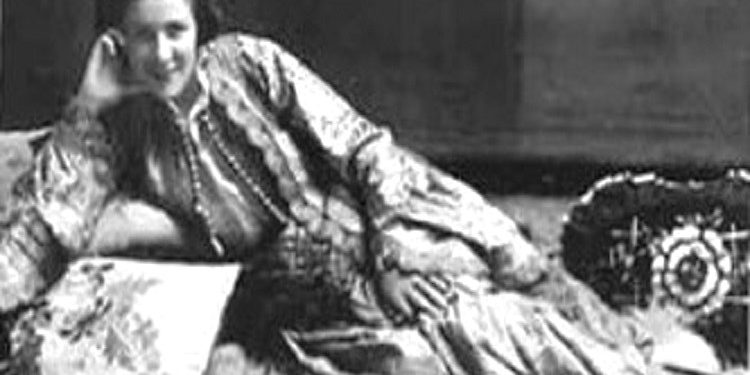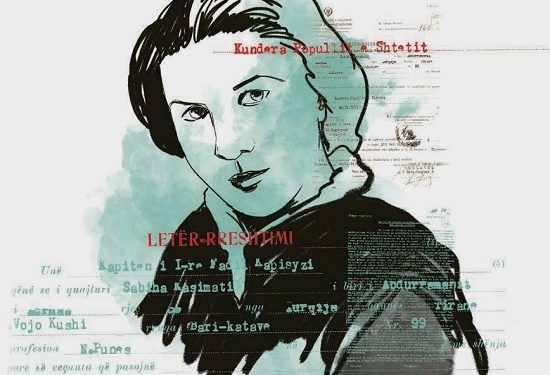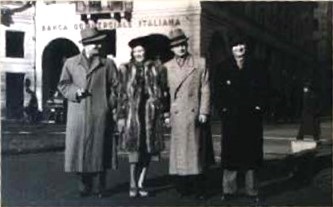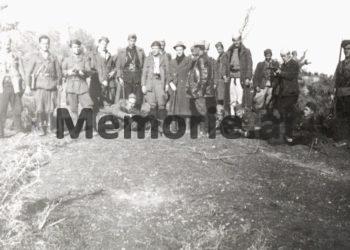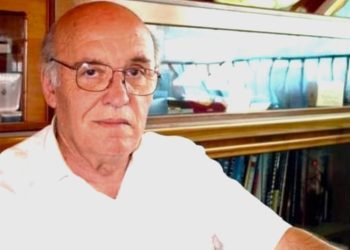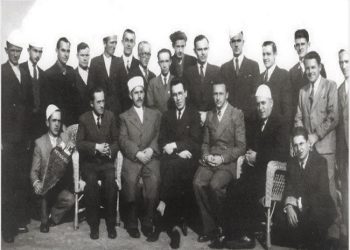By Dr. Ledia Dushku and Doris Pasha
The second part
“Communist regime and the researcher”, the case of biologist Sabiha Kasimati
Memorie.al / The article ‘Communist regime and the researcher’: the case of the biologist Sabiha Kasimati, aims to present essential aspects of the activity of Sabiha Kasimati, as an intellectual and researcher, placed in the historical context of the time. The analysis primarily aims to answer the question of who Sabiha Kasimati was and what she represented, before the establishment of the communist regime, in order to further understand the regime’s behavior towards her. The presentation of the character in several perspectives helps the reader to understand to what extent the regime’s behavior towards intellectuals was conditioned by scientific activity, psychological profile features, or the relationship with senior communist leaders, in the case of Sabiha Kasimati with Enver Hoxha himself.
Continues from the previous issue
The success of the project required the creation of a special library of scientific works, the bibliography of which she had already prepared. In addition to the library, Sabiha Kasimati also proposed the establishment of a laboratory for microscopic studies that would enable relative scientific research. “All this”, – Kasimati pointed out, – apart from the scientific interest, would also have a high importance from a linguistic point of view, since it will be possible to collect, select and assign them once and for all, in case the names do not exist and Albanian technical terms, which would greatly enrich our national language”.
In the above project, the scientific and academic way of its formulation is evident. Although at the beginning of her career as a researcher, Kasimat’s proposals speak of a scientific intuition and vision, which made her academic future very promising. The Royal Institute of Albanian Studies, at the meeting of February 18, 1943, in support of the Kasimat project, decided to create a science museum next to it, for the preparation of which it charged him.
Since February 22, Sabiha Kasimati would enjoy the status of an employee (with contract) at the Institute, with a monthly remuneration of 200 francs. Also, she would take care to prepare a description of the necessary materials and books for the special library.
The completion of studies in Italy, in a special branch such as ichthyology, the preparation of a real scientific project and the responsibility assigned by the Royal Institute of Albanian Studies, for the construction of the Science Museum, shows that Sabiha Kasimati had already entered the queue of promising researchers.
The communist regime and the behavior towards Sabiha Kasimati
Sabiha Kasimati continued to devote herself to scientific research even in the first years of the communist regime, an activity that in the final analysis will condition the regime’s relations with her. The archival documentation informs us that Sabiha Kasimati was a participant in the meeting of the Institute of Albanian Studies on April 13, 1946, alongside prominent figures of the Albanian academic world, such as: Kostaq Cipo, Mark Ndoja, Selahudin Toto, Eqrem Çabej, Aleks Buda, Gjergj Komnino, Gjergj Ashta, Jonus Tafilaj, Hasan Ceka and Nikola Lako.
The meeting chaired by the Minister of Education, Sejfulla Malëshova, made an analysis of the activity carried out during 1945, presented the new work plan and presented the new team that would lead the Institute of Studies. According to the minutes of the meeting, from 1945 to 1946, Sabiha Kasimati, together with Gjergj Komninon, had worked in the group directed by Eqrem Çabej, for the preparation of Albanian language files, for the terminology of natural sciences, an idea which she had already had two years earlier, in the project presented to Ernest Koliq.
On January 28, 1947, the Council of Ministers, with decision number 16, decided “the reorganization of the Institute of Albanian Studies into an autonomous entity, directly connected to the Council of Ministers”. The Institute, which would function with a temporary regulation, would have in its composition; “prominent people of art and science, would deal with the country’s current problems within the framework of economic and cultural development, utilizing the country’s natural resources and productive power. The three largest sections of the Institute would be linguistics and literature, natural sciences, and the third part would belong to history, sociology and economics.
The basis of his work would be the Marxist-Leninist ideology; work plans would be used, while the Soviet model would be the “red thread” that would outline the construction of science in Albania. Manol Konomi, the first president of the Institute, would say at the inaugural meeting: “We must take science and technology from the Soviet Union. We must study his literature and art. The new legal science will serve us in the development of our legal system. The experience of the Soviet Union will be a great help in the development of our economy and in the organization of our new State”.
While Enver Hoxha himself, in 1950, emphasized: “To fulfill the great tasks that the construction of socialism in our country sets before us, the Soviet science, the science of the vanguard, gives us the example. According to this great example, we promise you that we will get out of the isolation and limitation in which the regimes of the past wanted to keep the scientific work, we will fight it decisively and we will throw away the rubbish of bourgeois mold ideologies, we will adopt as best as possible the only scientific method, Marxism-Leninism, and we will equip ourselves with the results of Soviet science”.
What was Sabiha Kasimati’s relationship with this institute, which, with the exception of the partial name, had nothing in common with the Institute of Albanian Studies during the Second World War?! From the documentation consulted, it is difficult to discover the relationship between Kasimat and the Institute of Studies, during the year 1947. Meanwhile, in June 1948, the meeting of the Assembly of the Institute of Studies, in addition to changing the name to the Institute of Sciences, proposed and approved new members and associates, including Sabiha Kasimati.
In communist Albania, the study of natural sciences would take on special importance, as directly related to the country’s economic development. Professor Sotir Angjeli, head of the Natural Sciences section, in the report held at the inauguration of the Institute of Sciences, considered the study of fish and fishing in Albania to be important, in addition to the problem of water and forests. Thus, Sabiha Kasimati, the only one specialized in ichthyology, would be the first female researcher, who would deal with the study of fish and fishing. She would publish in the Science Bulletin, no. 2-3, 1948, a scientific article on this aspect, which was strangely not reflected in the subject matter of the journal.
The article examined the national water assets of Albania, emphasizing the very rich ichthyologic fauna, both in quantity and quality. Importance was given to diverse natural factors, analyzing the impact they had on the diversity of fish in Albanian waters. Researcher Kasimati described this diversity in scientific terms and emphasized the high quality of fish in the fresh waters of the Albanian coast.
The article also addressed the problems of fishing, and even boldly highlighted the many problems it faced, from the primitive tools used by fishermen, the lack and limited use of fishing boats, the lack of tools and equipment for preserving live fish, the lack of means of transport, without overlooking the missing tradition of fishing and a special law for it.
Fish production was another important aspect addressed in the article, since according to the reports of foreign technicians and researchers; the capacity of internal waters in Albania was much greater than the current production. Researcher Kasimati was critical of the situation in which fishing in Albania was found, but without being satisfied with findings alone. She wanted to identify the problems through the facts and provide solutions to them, solutions that, according to her, would contribute to the further impoverishment of Albanian waters and to the utilization of all the country’s fish resources.
Fish culture (a branch of ichthyology) and the organization of fishing on a rational and modern basis, while of course preserving the country’s ichthyological wealth; better organization of fishing, using modern tools and international laws, were the solutions she proposed. This made Kasimat, an open-minded researcher, in a regime that dictated everything. The article, which showed the professional growth of Sabiha Kasimat, was based on scientific research carried out through expeditions and periodical research. As a Western-educated scholar, her references were also similar, having nothing in common with Marxist-Leninist ideology and Soviet science references.
The article would precede a further collaboration with the Institute of Sciences, where in addition to the preparation of the monograph ‘Fishes of Albania’, she would be a participant in various research expeditions, as well as in the preparations for the Science Museum. For the first time, we find the information about the monograph ‘Fishes of Albania’ in the work plan of the Institute of Sciences for the year 1948. There it was foreseen that “the brochure Fishes of Albania (about 100 pages, 1,200 copies), made by Mrs. Kasimat”, to be published in September.
The amount of money that would be spent on the publication of the study was also planned. Judging by the short time for publication of the booklet, we tend to think that the publication would be along the lines of Sabiha Kasimati’s thesis work.
From the research carried out, it appears that the booklet was not published that year, while the research work in the zoology sector, where Sabihaja was a part of, throughout 1949, continued with research in saltwater as well.
The Institute of Sciences reports in the 1949 newsletter that; “the zoology team has collected ichthyological material from Lake Shkodra, Buna and Drini, in the waters of the Shkodra District; has collected the same material from the salty waters and the coast of Shengjin. At the same time, the team made observations of a scientific nature, on the development of fish culture, on the types and economic value of these”.
All this makes us think that the publication of the brochure has been postponed, perhaps due to lack of budget, and Kasimati has continued the research work to enrich her study with salt waters. The postponement of the publication is easily proven since in the Bulletin of the Institute of Sciences, no. 1-2, year 1950, it is noted that; “in this year. The original collective studies “Orthography of the Albanian language” and “Fishes of Albania” by Sabiha Kasimati have been published.
The information regarding the above is more complete in the draft work plan of the Institute of Sciences for the year 1950, in which it was foreseen to publish: “A work on the ‘Fishes of Albania’, compiled by Sabiha Kasimati. The work with 100 or so pages of text and 50 or so pictures will be printed in the first quarter and will be published in the second quarter in 3,500 copies”.
The study “Fish of Albania” saw the light of publication, just as it was predicted, in 1950, since in the report of the collaborator of the State Security, with the pseudonym “Pruresja”, dated April 27, 1950, it is shown that Sabiha Kasimati, in conversation with freely with him, had expressed:
“…We have now sent a brochure to the printing press, to be published; it is my work, most of it was helped by Çabeu [it is about Eqrem Çabejn]. Today I went and got this brochure from the printer. I told them that the Control Commission is looking for it…”!
Unfortunately, at the moment we do not have any information on his further fate. Strangely, there is no trace of him even in the National Library, where no record can be found to prove his existence, not even a trace in the book registration inventory of the time.
The researcher Leka Ndoja hypothesizes that the work of Sabiha Kasimati was appropriated after her shooting in February 1951 and was published in 1958, with the same title, under the authorship of the Russian researcher Anatolij Polyakov and the Albanians Ndoc Filipi and Ndoc Rakaj . It is difficult for us to affirm such a thing, in the absence of a comparative scientific analysis, between the book ‘Fishes of Albania’ by Sabiha Kasimati and the one published under the names of the aforementioned authors.
As long as we do not have the brochure published in 1950, this comparative analysis cannot be exhaustive. However, researchers in the field can compare the book published in 1958, with the topic of the diploma and the article of 1948, works which Kasimati would undoubtedly have had as a basis in the design of the study “Fishes of Albania” . Petro Luarasi has taken a step; he has translated her diploma topic, at the center of which are the different typologies of fish, namely the analysis of their seven families; geographical description of ichthyological environments, as well as a brief description of the fishing industry in Albania.
Meanwhile, zoology researcher, Professor Ferdinand Bego, has made the scientific review, evaluating her thesis as; “an excellent thesis, written with rich language and scientific accuracy, in which she demonstrates an in-depth knowledge of the science of ichthyology and our country’s freshwater environments.”
It remains difficult from the documentation of the moment to reach an exhaustive conclusion regarding the appropriation of Sabiha Kasimati’s scientific work. However, it cannot be denied that there are reasonable doubts regarding this matter, which lead to think that such an appropriation may have taken place, especially since Soviet researchers were sitting cross-legged in Albania.
In a totalitarian regime, whoever was considered an “enemy” and punished as such deserved nothing? His family was exiled, his name disappeared, his work was appropriated and he/she was consigned to oblivion. As Machiavelli also says in his book The Prince: “When it is necessary to harm a man, he must be severely harmed, so that no one will fear his revenge.” Memorie.al
The next issue follows




